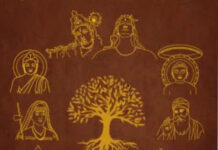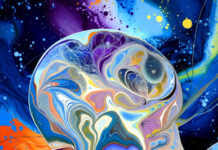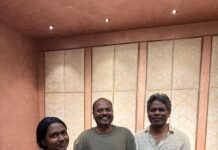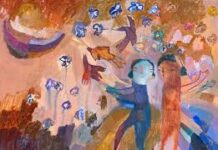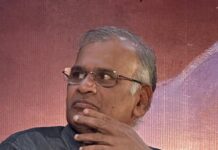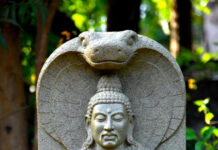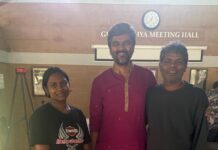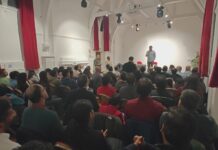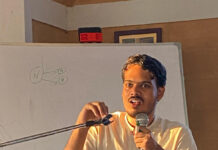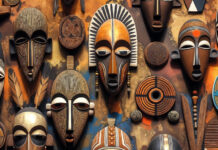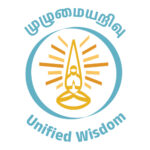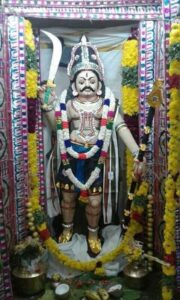
About thirty years ago, a ten-day conference was held at St. Xavier’s College in Palayamkottai. It was conducted by Christian missionaries with foreign financial assistance. The title of the seminar was ‘Gods of the People.’ Numerous writers and researchers from all over Tamil Nadu were invited to participate in it.
It was in that conference, conducted at a significant expense, that for the first time, a certain viewpoint was presented. It was stated that the folk deities in India are not Hindu gods, and that Hinduism is trying to appropriate and obliterate them. It was also mentioned that those who worship these folk deities are not Hindus, and that Hindus are trying to convert them into Hindus.
In 2009, S. Tamilselvan, a Marxist party activist who participated in that seminar, wrote that the seminar opened his eyes. Just consider who needs to come and open the eyes of these people!
Until that seminar took place, no one in Tamil Nadu had the notion that the folk deities were not Hindu gods. Those who spoke about rationalism here used to belittle and mock these deities. They consistently labeled the devotion and rituals associated with these deities as Hindu superstitions and barbaric worship. Whenever they attacked Hinduism, they would immediately point to deities like Maadasamy and Muniyasamy and demean them. From the Christian missionaries of the 18th century to the rationalists up until 1990, everyone did this.
However, within a few years after that conference, they began to say that worshiping those folk deities was progressive. They started explaining that these folk deities were all from marginalized communities and that they were all ancestors.
Subsequently, this trend gained more strength. They said that Murugan is not a Hindu god, but a Tamil god, a Tamil deity. After another ten years, they claimed that Shiva is not a Hindu god, and Shaivism is not a part of Hinduism. Next, they argued that Vishnu is not a Hindu god and that it is a ‘Mal worship’. Then, they claimed that the Vedas mentioned in ancient Tamil texts are not the Rig, Yajur, Sama, and Atharva Vedas. In other words, they concluded that the entire Hindu religion is not Hinduism. What is their problem? The answer is that there are certain forces behind all of this.
Are Madan and Muniyan Hindu deities? If they are considered Hindu deities, then are Vishnu and Shiva also Hindu deities? How can two types of deities exist within the same religion? This doubt may arise for some people. In response to this, we can ask a question. At the core of Hinduism itself, there are two types of deities. One is the formless deity, which is Nirguna Brahman, an ultimate reality that is unknowable and indescribable in any form. The other is the deity with form, which is Saguna Brahman.
I said that the fundamental process through which a natural religion is formed will always be ongoing within it. Therefore, it will continuously absorb other deities and worship practices. Instead of destroying them, it will retain them within itself. Within these absorbed traditions, philosophical dialogue will occur. Those deities and worship practices will continue to be philosophically explained. The wisdom and philosophies that facilitate this integration and explanation will also continue to develop within it.
That is to say, a part of a natural religion will always remain rooted in tribal culture. Another part will exist as a highly refined and intellectual philosophical vision. The tail is at one end, and the head is at another end. But it is impossible to say which is the tail and which is the head, because it is a circle, continuously revolving without end.
Between these two points lie all the aspects of a natural religion’s worship and philosophy. This entirety is what we refer to as the Hindu tradition.
Yes, there are three types of deities in Hinduism.
a) Functional gods, also known as minor deities, are referred to as “Deva” or “Devatha” in Sanskrit. These gods are worshipped at local and regional levels and are associated with specific functions or activities. They include gods like Indra, Varuna, Soma, and Yama from Vedic times. These deities represent specific actions or rituals and are worshiped for particular purposes, in specific times, and at specific locations.
b) The almighty gods are those who perform the three primary functions of creation, preservation, and destruction, encompassing the entirety of the universe. They are the supreme beings, such as Shiva, Vishnu, and Parashakti, who govern the universe with absolute authority.
c) Philosophical gods are perceived as embodiments of philosophical concepts. They are considered as representations of abstract ideas. For example, Brahman is one such deity.
Minor deities are present in our streets and even inside our homes. One deity assists in fertility and yield, another protects from illness, and yet another provides guidance. Most often, simple rituals such as offering fruits or lighting lamps are performed as forms of worship.
The main deity resides in the sanctum sanctorum of the temple with form and grace. There would be established practices of worship for the deity.
Philosophy of divinity has no form. It can only be perceived as a philosophical concept or through meditation.
Hindus simultaneously worship these three deities. It’s something everyone knows. You have never seen it compiled like this, that’s all.
For Hindus, there are family deities, village deities, and guardian deities, which vary for each individual. Similarly, there are many auxiliary deities such as Hanuman, Sandikeswara, Chakrathalwar, and the Navagrahas, which are worshiped by Hindus.
Hindus also worship Shiva and Vishnu. They are considered the supreme deities. If we examine the hymns dedicated to Shiva and Vishnu, we can see that these deities are described as the forms of Brahman (Brahma Swaroopam). Brahman represents the philosophical deity.
Shaivites worship both Sudalaimadan and Lord Shiva. In addition, they speak of the pure philosophy of Saiva Siddhanta. Vaishnavites, on the other hand, worship Anjaneya (Hanuman) alongside offering reverence to Lord Vishnu. They also speak of the pure philosophy called Vishishtadvaita.
If you perform a Ganapathi homam, the priest will first say to you, “Offer respects to the pitrus (ancestors), kuladevata (family deity), and kavaldevata (guardian deity),” and then the homam proceeds accordingly.
It is because of this threefold belief that Hindu Dharma does not come under the European definition of religion. Even Shaivism or Vaishnavism are not religions as Europeans call them. Shaivism is not about worshiping a single deity form of Shiva. Within the Shaivite tradition there is a pure philosophy called Sivam or Pathi. There will also be an Abhedavada Shaiva who says I am Shiva (Sivoham). There will also be a devotee who worships in the Shiva temple. Also, Suudalaimadan and Muthalamman are present in Shaivism.
For a Shaivite, these three are not separate. He considers that the Shiva philosophy ‘Pathi’ takes the divine form Shiva. He sees Sudalai Madan as an aspect of Shiva. He perceives them all as interconnected. This interconnectedness is the practice of Hinduism. It has been going on here for fifty thousand to sixty thousand or more years. It is happening within each of us today.
It was the Europeans who established the Hindu tradition and the religions within it as European-style religion. We also say Hinduism for both law and practice. We also use terms like Shaivism and Vaishnavism based on the meanings attributed by our ancestors. However, we must understand that Hinduism is not a religion or sect as Europeans describe it; rather, it is a continuous tradition of philosophical inquiry. We must have clarity that Shaivism, Vaishnavism, and others are philosophical activities which operate on the three planes.
Why do those who call the Hindu tradition a ‘religion’ insist on doing so? Once it is labeled a religion, it implies a single deity and a single mode of worship. Then, they claim that only one deity or mode of worship constitutes that religion. Subsequently, they start saying that everything else was later additions. They argue that the other deities are being encroached upon by Hinduism.
Those who first said this were very knowledgeable scholars who “knew everything.” They had clear political and religious objectives. The ones shouting after hearing them are ignorant politicians.
We cannot debate with both sides. We cannot withstand their ferocity. We must have clarity ourselves. Their intention is to stop the continuous process of wisdom that we call the Hindu tradition. Their goal is to break it into many pieces.
However, we must recognize that Hinduism, which exists simultaneously on three levels, offers three opportunities for divine realization. From another perspective, it provides a way to fully attain divine realization through these three levels. One who dwells in all three levels simultaneously is the truly enlightened one. A prime example is Ramakrishna Paramahamsa. He was a profound Advaitin who deeply realized the philosophical concept of Brahman. Additionally, he worshiped Krishna and served as a priest at the Kali temple.
Jeyamohan
Translated by
Geethaa Senthilkumar
